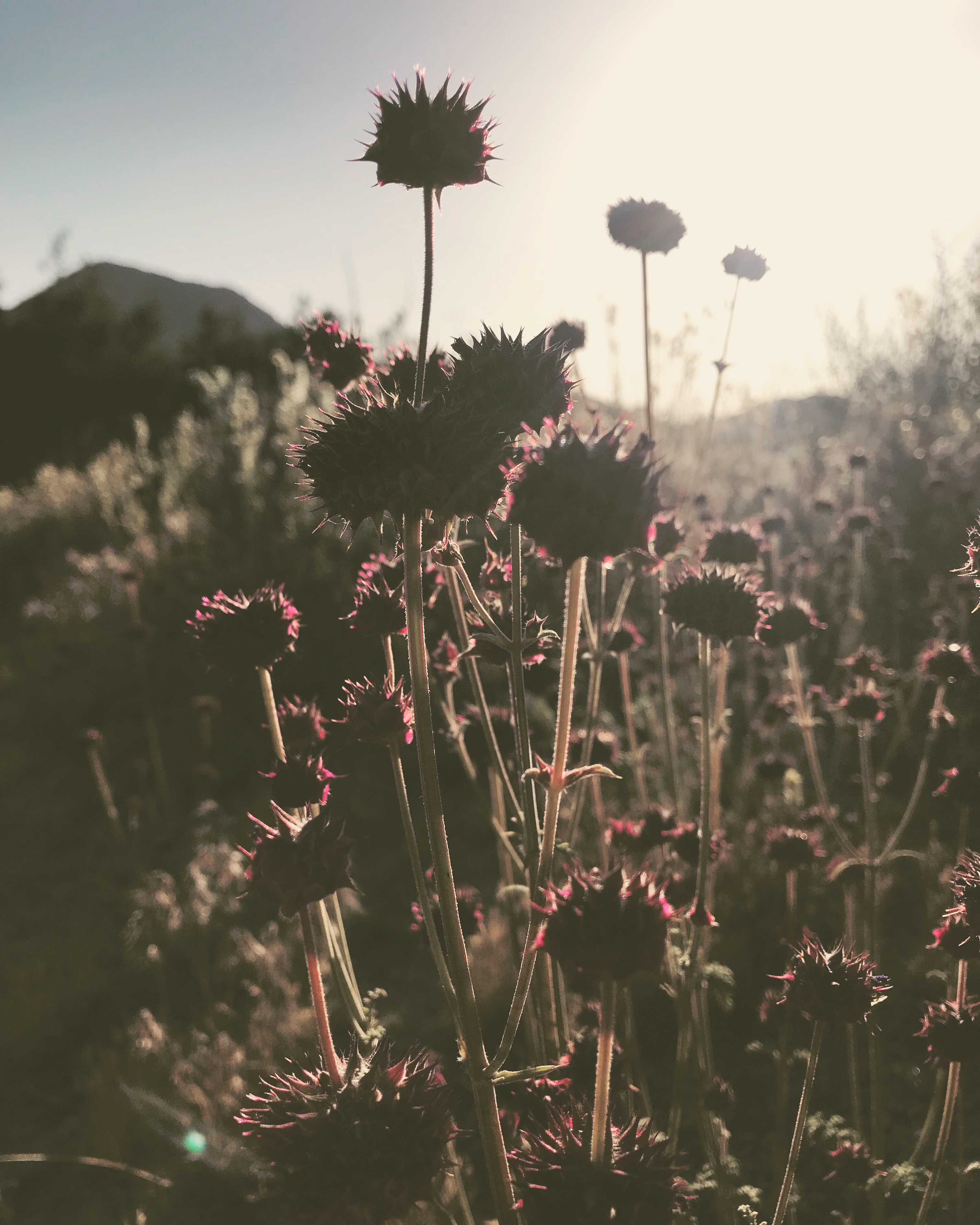For years now I have been enchanted by the whimsical blooms of Wild Desert Chia (Salvia Columbariae) also known as Golden Chia, for the way the tiny seeds shimmer in the midday sun. In springtime, the flowers of this high desert ephemeral line the dirt roads and cover the rocky hillsides of the Mojave.
Most years I'd visited too early or late to harvest them, but this season I was thrilled that I'd come at just the right time. I'd imagined spending sun-soaked afternoons with the plants, gathering their ripe seeds to nourish myself in the comings months. However, as I delved deeper and did more research, my plans began to change.
While the Wild Chia appears abundant here, the truth is that its range has grown increasingly smaller over the years as non-native species compete for resources, and development continues to threaten its natural habitat. In light of this, I felt far less inclined to gather its seeds for my own consumption and decided instead to do what I could to help propagate it.
Chia seeds are a miracle of nourishment in the arid landscape of the high desert. They have been long revered as both a food and medicine by the Cahuilla, Kawaiisu, Mohave, Tohono O'odham, Chumash Luiseno, Tubatulabal, Yavapai and Akimel O'odham peoples. As an important traditional food of the indigenous peoples of Southern California, Salvia columbariae is a plant that deserves immense respect and sensitivity when it comes to harvesting.
Stewardship forms the foundation of my relationship with the plants and places I care for. While spreading seeds is a fundamental part of working with any wild medicine, it is particularly important when it comes to plants that have been essential sources of food for indigenous peoples.
Relationship with land is a deeply personal thing, and we must all listen to our own inner compass when relating to plant medicine. For me, it felt in alignment to propagate the seeds of the Golden Chia, rather than gathering them to eat. I easily can go to the store and purchase cultivated chia seeds by the pound, whereas the seeds of these wild species are comparatively precious and limited in their supply.
Additionally, there are countless other desert dwellers, many pollinators among them, who depend on Salvia columbariae for their continued survival. While I certainly nibbled on generous handfuls of them here and there, most of my time with this aromatic wild sage was spent collecting its seeds to broadcast in areas where it could continue to proliferate naturally.
Luckily, the cultivated species of chia that is readily commercially available (Salvia hispanica) retains many of its wild counterpart's medicinal and nutritional gifts, and this ancient food remains as nourishing, delicious, and relevant as ever!
Read on to learn all about how to
cultivate your own relationship with Chia.

